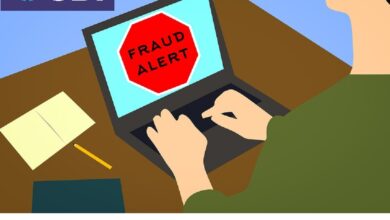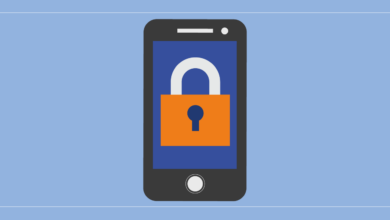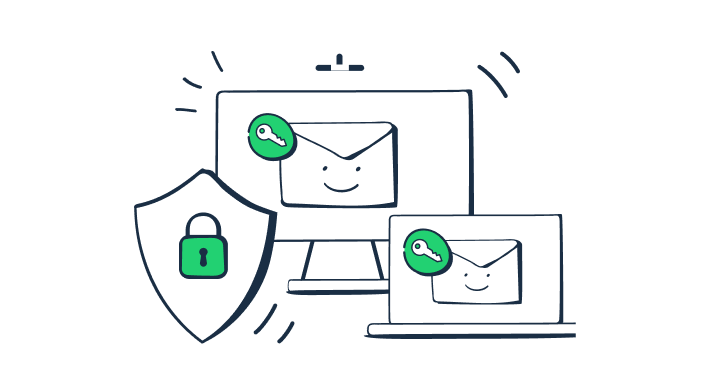
Recommended Practices for Enterprise Electronic Messaging Security and Governance
Recommended practices for enterprise electronic messaging security and governance are crucial in today’s digital landscape. With cyber threats constantly evolving, securing your company’s email communication is no longer a luxury, but a necessity. This post dives into essential strategies, from implementing robust data loss prevention (DLP) measures and securing email gateways to educating employees about phishing scams and establishing comprehensive incident response plans.
We’ll explore practical steps to safeguard your sensitive information and maintain compliance with relevant regulations, ensuring your business operates securely and efficiently.
We’ll cover key areas like email encryption, multi-factor authentication (MFA), access control, and the importance of a well-defined email archiving and retention policy. Understanding these practices isn’t just about ticking boxes; it’s about building a culture of security within your organization, protecting your data, and minimizing your risk exposure. Let’s get started!
Data Loss Prevention (DLP) Strategies
Protecting sensitive data within an enterprise email system is paramount. A robust Data Loss Prevention (DLP) strategy is crucial for mitigating the risk of data breaches and maintaining compliance with regulations like GDPR and CCPA. This involves a multi-faceted approach encompassing technical safeguards, employee education, and ongoing monitoring.
Comprehensive DLP Strategy Design for Enterprise Email
A comprehensive DLP strategy begins with identifying sensitive data types within your organization. This could include personally identifiable information (PII), financial data, intellectual property, and customer records. Once identified, you can implement technical controls such as email content filtering to scan for s, regular expressions, or file types associated with sensitive data. This filtering can trigger alerts, block emails containing sensitive information, or automatically encrypt them.
Furthermore, data loss prevention requires employee training programs focused on secure email practices, including the proper handling of sensitive information and awareness of phishing attempts. Regular security awareness training, including simulated phishing campaigns, helps reinforce good habits and identify vulnerabilities in employee understanding. Finally, continuous monitoring and analysis of email traffic for anomalies is essential to detect and respond to potential data breaches quickly.
The Role of Email Encryption in Preventing Data Breaches
Email encryption plays a vital role in safeguarding sensitive data transmitted via email. By encrypting emails, you ensure that only authorized recipients with the correct decryption key can access the content. This prevents unauthorized access even if an email is intercepted during transmission. Different encryption methods exist, ranging from simple S/MIME to more robust end-to-end encryption solutions.
Choosing the right encryption method depends on the sensitivity of the data and the level of security required. For example, highly sensitive data like financial records or medical information would benefit from stronger, end-to-end encryption, whereas less sensitive internal communications might utilize S/MIME. Regular key management practices are also crucial to maintain the effectiveness of encryption.
Comparison of Email DLP Solutions
Several email DLP solutions are available in the market, each offering a unique set of features and capabilities. Choosing the right solution depends on factors such as budget, organizational size, and specific security requirements. Some solutions focus on cloud-based email platforms, while others offer on-premises deployments. Some provide advanced features like machine learning-based anomaly detection, while others offer more basic content filtering capabilities.
It’s crucial to carefully evaluate different solutions and choose one that aligns with your organization’s needs and security posture.
Key Features and Benefits of Three DLP Solutions
The following table compares three hypothetical DLP solutions, highlighting their key features and benefits. Note that specific features and pricing will vary depending on the vendor and the chosen package. This table serves as an example and should not be considered an exhaustive comparison of all available solutions.
| Feature | Solution A | Solution B | Solution C |
|---|---|---|---|
| Content Filtering | , Regex, File Type | , Regex, File Type, Machine Learning | , Regex, File Type, Data Loss Prevention Policies |
| Encryption | S/MIME | S/MIME, End-to-End Encryption | S/MIME, End-to-End Encryption (optional add-on) |
| Reporting and Analytics | Basic Reporting | Detailed Reporting, Customizable Dashboards | Detailed Reporting, Customizable Dashboards, Anomaly Detection |
| Integration | Microsoft 365, Google Workspace | Microsoft 365, Google Workspace, On-Premises Servers | Microsoft 365, Google Workspace, On-Premises Servers, Third-Party Applications |
| Pricing | Per-user licensing | Per-user licensing, tiered pricing | Per-user licensing, tiered pricing, custom enterprise plans |
Email Security Gateways and Filtering
Email security gateways are the unsung heroes of enterprise communication, acting as the first line of defense against a barrage of malicious emails and attachments. They’re essential for protecting your organization’s data and reputation from the ever-evolving threats in the digital landscape. Without robust email security, your business is vulnerable to data breaches, phishing attacks, and crippling malware infections.Email security gateways offer a multi-layered approach to email protection.
This goes beyond simply blocking spam; they actively scan and filter emails for a wide range of threats, ensuring only legitimate and safe communications reach your inboxes. Understanding their functionalities and implementing best practices is crucial for maintaining a secure email environment.
Anti-spam, Anti-virus, and Anti-phishing Capabilities
Modern email security gateways boast sophisticated capabilities far exceeding simple spam filters. Anti-spam features utilize advanced techniques like Bayesian filtering, heuristic analysis, and sender reputation checks to identify and block unwanted emails. Anti-virus functionality employs multiple scanning engines to detect and remove malware, including viruses, worms, Trojans, and ransomware, from incoming emails and attachments. Crucially, anti-phishing capabilities analyze email content for suspicious links, attachments, and sender identities, flagging potentially harmful communications for review or automatic blocking.
For example, a sophisticated gateway might detect a phishing email by identifying inconsistencies between the sender’s email address and displayed name, or by analyzing the URL of a suspicious link to determine if it leads to a legitimate website.
Regular Updates and Maintenance of Email Security Gateways
Regular updates are paramount for maintaining the effectiveness of your email security gateway. Threat landscapes are dynamic, with new malware and phishing techniques constantly emerging. Outdated security software is significantly more vulnerable to these threats. Regular updates ensure that your gateway has the latest virus definitions, anti-spam rules, and anti-phishing algorithms, providing the best possible protection. This includes not only software updates but also regular maintenance tasks like checking logs for unusual activity, reviewing security settings, and performing regular performance tests to ensure the gateway operates efficiently under high load.
Failing to keep your gateway updated can leave your organization exposed to significant security risks. For instance, a known vulnerability in an outdated gateway could be exploited by attackers to bypass security measures and deliver malware directly to your employees’ inboxes.
Configuring Email Filtering Rules
Configuring effective email filtering rules requires a careful balancing act between security and usability. A step-by-step approach is recommended:
- Identify high-risk senders: Begin by blocking emails from known spam sources or domains with a history of malicious activity. This might include domains commonly used for phishing or those listed on public blacklists.
- Implement content filtering: Configure rules to scan emails for specific s, phrases, or attachments associated with malicious content. For example, block emails containing terms like “free money,” “urgent action required,” or attachments with unusual file extensions.
- Set up attachment filtering: Restrict or block specific file types known to carry malware, such as .exe, .scr, and .bat files. Consider implementing secure file transfer protocols for sensitive documents.
- Utilize sender authentication protocols: Implement SPF, DKIM, and DMARC to authenticate email senders and prevent email spoofing. These protocols help verify the legitimacy of incoming emails and reduce the risk of phishing attacks.
- Regularly review and adjust rules: Filtering rules should be regularly reviewed and updated to adapt to evolving threats and changing business needs. Track the effectiveness of your rules by monitoring the number of blocked emails and false positives.
Handling Suspicious Emails and Attachments
When a suspicious email slips through your filters, immediate action is crucial. Establish clear procedures for handling such emails:
- Never open suspicious attachments: Avoid opening any attachments from unknown or untrusted senders. Even seemingly harmless attachments can contain malicious code.
- Do not click on suspicious links: Hover over links to see the actual URL before clicking. If the URL looks suspicious or doesn’t match the sender’s domain, do not click it.
- Report suspicious emails: Establish a clear process for reporting suspicious emails to your IT department or security team. This allows for prompt investigation and remediation.
- Educate employees: Regular security awareness training is essential to educate employees on identifying and avoiding phishing scams and other email-borne threats. This should include examples of common phishing techniques and best practices for handling suspicious emails.
Access Control and Authentication
Securing enterprise email communication necessitates a robust access control and authentication system. This goes beyond simply having a password; it involves carefully managing who can access what, and verifying user identities with multiple layers of security. A well-designed system minimizes the risk of unauthorized access, data breaches, and compromised communications.
Implementing strong access controls and authentication methods is paramount for safeguarding sensitive information exchanged via email. Failure to do so leaves the organization vulnerable to various cyber threats, including data loss, phishing attacks, and account takeovers. A layered approach, combining robust authentication with granular access permissions, significantly enhances the overall security posture.
Least Privilege Access in Enterprise Email
The principle of least privilege dictates that users should only have access to the information and resources absolutely necessary for their job functions. In the context of enterprise email, this means restricting access to specific mailboxes, folders, and functionalities. For example, a marketing assistant might only need access to their personal inbox and shared marketing team folders, while a senior executive might have broader access including access to specific project folders and distribution lists.
This granular control limits the potential damage from a compromised account. If a marketing assistant’s account is compromised, the attacker’s access is limited to the assistant’s mailbox and shared folders, preventing broader access to sensitive company data.
Multi-Factor Authentication (MFA) Methods and Effectiveness
Multi-factor authentication adds an extra layer of security beyond a simple password. It requires users to provide multiple forms of authentication to verify their identity. Common MFA methods include:
- Time-based One-Time Passwords (TOTP): These codes are generated by an authenticator app (like Google Authenticator or Authy) and change every 30 seconds. They provide strong protection against password theft, as even if an attacker obtains the password, they won’t have the dynamically changing TOTP code.
- Push Notifications: The user receives a notification on their registered device (phone or tablet) prompting them to approve the login attempt. This is user-friendly and convenient.
- Security Keys: Physical devices (USB or NFC) that generate cryptographic keys to verify identity. They offer exceptionally strong security, as they are resistant to phishing and other attacks.
- SMS-based One-Time Passwords: While convenient, SMS-based MFA is less secure than other methods due to vulnerabilities in SMS infrastructure. It should be considered a lower level of security than TOTP or security keys.
The effectiveness of each MFA method varies. Security keys generally offer the highest level of security, followed by TOTP and push notifications. SMS-based OTPs should be avoided whenever possible due to their susceptibility to SIM swapping attacks.
Solid enterprise electronic messaging security relies on robust governance, including strong authentication and data loss prevention. Building secure and efficient messaging systems often involves leveraging modern development tools, which is where exploring options like domino app dev the low code and pro code future becomes really valuable. This allows for faster development cycles while still maintaining the high security standards needed for enterprise messaging.
Designing a Robust Authentication System for Enterprise Email
A robust authentication system should incorporate several key elements:
- Strong Password Policies: Enforce complex passwords with length requirements, character variety, and regular changes. Consider using password managers to assist users in creating and managing strong, unique passwords.
- Mandatory MFA: Implement MFA for all users, especially those with access to sensitive data. Prioritize more secure MFA methods like TOTP or security keys.
- Account Lockout Policies: Automatically lock accounts after a certain number of failed login attempts to prevent brute-force attacks.
- Regular Security Audits: Conduct periodic audits to identify and address any vulnerabilities in the authentication system.
- User Monitoring and Anomaly Detection: Implement systems to detect unusual login activity, such as logins from unfamiliar locations or devices. This can help identify potential compromises.
Best Practices for Password Management and User Education
Effective password management and user education are crucial for a strong security posture. These practices help users understand and adopt secure password habits, reducing the risk of compromised accounts.
- Password Managers: Encourage the use of password managers to generate and store strong, unique passwords for each account.
- Regular Password Changes: Establish a policy for regular password changes, balancing security with user convenience. Consider enforcing changes every 90 days.
- Password Reuse Prevention: Educate users on the dangers of reusing passwords across multiple accounts. A compromise on one account can lead to access to others.
- Phishing Awareness Training: Regularly train users to identify and avoid phishing attempts, which are a common method for obtaining login credentials.
- Multi-Factor Authentication Enforcement and Education: Emphasize the importance of enabling and using MFA across all accounts, highlighting the added protection it provides.
Email Archiving and Retention Policies
Email archiving and retention policies are critical components of a robust enterprise electronic messaging security and governance strategy. They’re not just about saving space; they’re essential for legal compliance, efficient eDiscovery, and maintaining data integrity. A well-defined policy protects your organization from legal repercussions and operational disruptions.
The Importance of Email Archiving for Legal Compliance and eDiscovery
Email archiving provides a comprehensive, tamper-proof record of all electronic communications. This is crucial for meeting legal and regulatory obligations, such as those imposed by Sarbanes-Oxley (SOX), HIPAA, GDPR, and others. In the event of litigation or regulatory investigations, a readily accessible archive allows for swift and efficient eDiscovery, minimizing legal costs and potential penalties. Without a robust archiving system, locating and producing relevant emails can be a time-consuming and expensive process, potentially resulting in missed deadlines and negative consequences.
The ability to quickly and easily retrieve specific emails based on various criteria (date, sender, recipient, s, etc.) is paramount for successful eDiscovery.
Creating and Implementing an Email Retention Policy
Developing a compliant email retention policy requires careful consideration of several factors. First, identify all applicable legal and regulatory requirements. This includes understanding retention periods for different types of emails (e.g., financial records, customer communications, employee communications). Next, classify email data based on its sensitivity and importance. Different retention periods may apply to different classifications.
For example, highly sensitive data like personally identifiable information (PII) might require longer retention periods than less sensitive communications. Finally, the policy should Artikel procedures for data disposal and destruction when retention periods expire, ensuring compliance with data privacy regulations. The policy should be clearly documented, easily accessible to all employees, and regularly reviewed and updated to reflect changes in legislation and business needs.
Consider using a workflow system to manage approvals for exceptions or extensions to the retention policy.
Best Practices for Managing Email Storage and Ensuring Data Integrity
Effective email storage management requires a multi-faceted approach. Data deduplication techniques can significantly reduce storage costs by eliminating redundant copies of emails. Regular data backups are essential to protect against data loss due to hardware failure or cyberattacks. Implementing robust data encryption safeguards sensitive information both in transit and at rest. Employing strong access control measures, such as role-based access control (RBAC), ensures that only authorized personnel can access archived emails.
Regular audits of the archiving system and processes help to verify compliance with the retention policy and identify areas for improvement. Consider using a system with tamper-evident logging to ensure the integrity of the archived data. Finally, choose an archiving solution that allows for easy search and retrieval of emails, even with massive datasets.
Email Archiving Solution Comparison
The following table compares different email archiving solutions. Note that pricing can vary significantly based on the number of users, storage capacity, and features required. These are illustrative examples and actual costs may differ.
| Solution | Features | Deployment | Approximate Cost (USD/user/year) |
|---|---|---|---|
| Vendor A | Data deduplication, encryption, eDiscovery tools, compliance reporting | Cloud, On-premises | $10 – $30 |
| Vendor B | Advanced search, legal hold capabilities, integration with other security tools | Cloud | $15 – $40 |
| Vendor C | Basic archiving, limited eDiscovery features, cost-effective option | Cloud, On-premises | $5 – $15 |
| Vendor D | Scalable solution, robust security features, enterprise-grade functionality | Cloud, On-premises | $25 – $75+ |
Mobile Device Management (MDM) for Email Access: Recommended Practices For Enterprise Electronic Messaging Security And Governance
The increasing reliance on mobile devices for work necessitates robust security measures to protect sensitive enterprise email data. Employees often access corporate email on personal smartphones and tablets, creating significant vulnerabilities if not properly managed. Implementing a Mobile Device Management (MDM) solution is crucial for mitigating these risks and ensuring compliance with data protection regulations.
Security Risks Associated with Mobile Email Access
Accessing enterprise email on personal mobile devices introduces several security risks. Lost or stolen devices can expose sensitive information to unauthorized individuals. Unsecured Wi-Fi networks used for email access can leave data vulnerable to interception. Lack of device encryption allows data to be easily accessed if the device is compromised. Furthermore, jailbroken or rooted devices bypass security measures, creating entry points for malware and data breaches.
Finally, the lack of consistent software updates on personal devices increases susceptibility to known vulnerabilities. These risks necessitate a comprehensive approach to secure email access on mobile devices.
Key Features and Functionalities of an MDM Solution
A comprehensive MDM solution offers a range of features to secure email access on mobile devices. These typically include remote device wipe capabilities, enabling administrators to erase sensitive data if a device is lost or stolen. Data encryption ensures that even if a device is compromised, the data remains inaccessible without the proper decryption keys. Application control allows administrators to restrict access to certain applications or functionalities on managed devices.
Geofencing capabilities can limit email access to specific geographical locations. Compliance and security policies can be enforced remotely, ensuring devices meet the organization’s security standards. Regular security updates and patching are pushed to devices automatically, reducing vulnerabilities. Finally, strong authentication mechanisms like multi-factor authentication (MFA) provide an additional layer of security.
Implementing and Managing an MDM Solution
Implementing an MDM solution involves several key steps. First, select an MDM vendor and platform that aligns with your organization’s needs and budget. Next, deploy the MDM agent on all managed devices. This often involves installing a profile or application on each device. Then, configure the MDM policies, including access controls, data encryption settings, and application restrictions.
Establish a process for onboarding new devices and offboarding devices when employees leave the company. Regularly monitor device compliance and address any violations promptly. Conduct periodic security assessments and update the MDM policies as needed to adapt to evolving threats and regulatory changes. Finally, provide adequate training to employees on the use of MDM-managed devices and the associated security policies.
Comparison of Different MDM Solutions
The market offers various MDM solutions, each with its strengths and weaknesses. Some solutions are cloud-based, offering scalability and accessibility, while others are on-premise, providing greater control over data. Features such as device management capabilities, security features, and integration with existing IT infrastructure vary significantly. Consider factors such as the size of your organization, budget constraints, and specific security requirements when choosing an MDM solution.
Some popular vendors include Microsoft Intune, VMware Workspace ONE, and MobileIron, each offering a comprehensive suite of features but with varying pricing models and support levels. A thorough evaluation of different vendors and their offerings is crucial before making a decision.
User Education and Awareness Training
A robust email security posture isn’t solely reliant on technological safeguards; it hinges critically on well-informed and vigilant employees. Human error remains a significant vulnerability in enterprise email security, making comprehensive user education and awareness training paramount. This training shouldn’t be a one-off event, but rather an ongoing process designed to equip employees with the knowledge and skills to identify and respond appropriately to email-borne threats.Effective training empowers employees to become the first line of defense against sophisticated phishing attacks, malware infections, and other malicious activities targeting the organization’s email system.
By fostering a security-conscious culture, organizations can significantly reduce their risk profile and protect sensitive data.
Designing a Comprehensive Email Security Awareness Training Program, Recommended practices for enterprise electronic messaging security and governance
A successful email security awareness training program should be multi-faceted, incorporating various learning methods to cater to different learning styles. This might include interactive modules, engaging videos, real-world case studies, and regular quizzes to reinforce learning. The program should be tailored to the specific roles and responsibilities of employees, focusing on the types of email-borne threats most relevant to their work.
For example, executives might receive training emphasizing CEO fraud, while technical staff might receive training focused on identifying malicious code in email attachments. Regular updates to the training materials are also essential to address emerging threats and evolving tactics used by cybercriminals. The frequency of training should be determined by the organization’s risk assessment and industry best practices; however, annual refresher training is generally recommended.
Educating Employees About Phishing, Malware, and Other Email-Borne Threats
Effective education requires clear and concise explanations of various email-borne threats. Phishing, for example, should be explained as attempts to trick individuals into revealing sensitive information such as usernames, passwords, or credit card details. Training should include examples of various phishing techniques, such as spear phishing (targeted attacks), whaling (targeting high-profile individuals), and clone phishing (mimicking legitimate emails).
Malware should be explained as malicious software designed to damage, disrupt, or gain unauthorized access to computer systems. Training should cover different types of malware, such as viruses, worms, Trojans, and ransomware, and how they can be spread through email attachments or malicious links. Finally, employees should be educated about other threats such as business email compromise (BEC), where attackers impersonate executives or other authorized personnel to defraud the organization.
Sample Phishing Emails and Identification Techniques
It’s crucial to provide employees with practical examples to illustrate the concepts discussed. Below are examples of phishing emails and how to identify them:
- Example 1: An email claiming to be from a bank asking for login credentials. Identifying factors: Poor grammar, generic greetings, suspicious links, requests for sensitive information.
- Example 2: An email with an urgent tone, promising a large sum of money or a valuable prize in exchange for personal information. Identifying factors: Unbelievable promises, pressure tactics, suspicious sender address.
- Example 3: An email containing a malicious attachment disguised as an important document. Identifying factors: Unexpected attachments, unusual file extensions, sender address mismatch.
Employees should be trained to carefully examine email headers, links, and attachments before clicking or opening them. They should be encouraged to report any suspicious emails to the IT security team immediately.
Importance of Regular Security Awareness Training
Regular security awareness training significantly reduces the likelihood of successful phishing attacks and malware infections. By repeatedly reinforcing key security concepts and best practices, organizations can cultivate a security-conscious culture where employees are more likely to identify and report potential threats. This proactive approach can save organizations significant time, money, and reputational damage associated with data breaches and security incidents.
For example, a study by Verizon found that organizations with comprehensive security awareness training programs experienced a significantly lower rate of successful phishing attacks compared to those without such programs. Furthermore, regular training helps to mitigate the impact of human error, which is often a critical factor in security incidents.
Incident Response and Recovery Planning
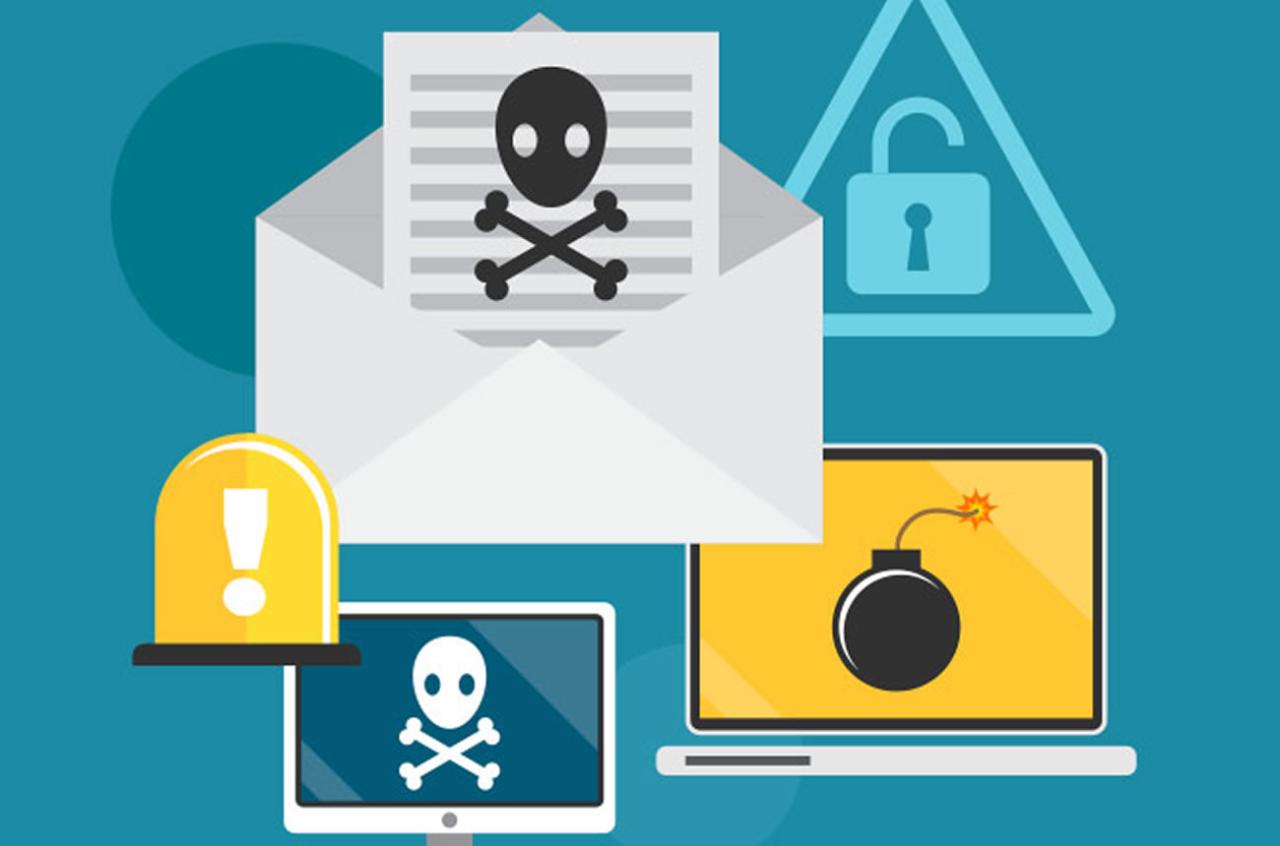
A robust incident response plan is crucial for minimizing the damage caused by email security breaches. Without a well-defined process, even minor incidents can escalate into significant disruptions, leading to data loss, financial penalties, and reputational harm. A proactive approach, including regular testing and review, is essential for ensuring the plan’s effectiveness and adaptability to evolving threats.
Responding to an email security incident requires a structured approach focusing on containment, eradication, and recovery. This involves identifying the compromised systems, isolating them to prevent further damage, removing the threat, and restoring systems and data to a secure state. Communication is key throughout this process, both internally and externally, depending on the severity and scope of the incident.
Incident Response Plan Design
An effective email security incident response plan should detail the roles and responsibilities of each team member, establish clear communication protocols, and define escalation procedures for different levels of severity. It should include pre-defined steps for identifying the incident, containing the breach, eradicating the threat, recovering lost data, and conducting a post-incident review. The plan should also address legal and regulatory compliance requirements, such as notification obligations to affected individuals or authorities.
For example, a plan might specify that the IT Security team is responsible for initial containment, while the Legal team handles communication with regulatory bodies. Escalation procedures could involve notifying management based on the severity level of the incident (e.g., low, medium, high, critical), with critical incidents requiring immediate notification of senior management and potentially external experts.
Incident Response Steps: Containment, Eradication, and Recovery
Containment focuses on limiting the impact of the incident. This might involve disconnecting affected systems from the network, blocking malicious email addresses, or temporarily suspending email services. Eradication involves identifying and removing the root cause of the incident, such as malware or a compromised account. This may require deploying security tools to scan and clean systems, resetting passwords, or implementing security patches.
Recovery involves restoring systems and data to a secure state. This might involve restoring data from backups, reinstalling software, and implementing security controls to prevent future incidents. For instance, if a phishing attack compromises employee credentials, containment involves blocking the malicious email and disabling the compromised account. Eradication involves scanning the system for malware and changing passwords.
Recovery might involve restoring emails from backups and providing security awareness training.
Importance of Regular Testing and Review
Regular testing and review of the incident response plan are essential to ensure its effectiveness and relevance. Testing allows organizations to identify weaknesses and refine their procedures. Regular review ensures that the plan remains up-to-date with the latest threats and technologies. Tabletop exercises, simulations, and real-world incident response drills can be used to test the plan’s effectiveness.
For example, a simulated phishing attack can test the response time and effectiveness of the incident response team. A review should consider changes in technology, threats, and regulations.
Examples of Email Security Incidents and Their Potential Impact
Different types of email security incidents can have varying impacts. Phishing attacks can lead to credential theft and data breaches, resulting in financial losses and reputational damage. Malware delivered via email can infect systems, disrupt operations, and expose sensitive data. Spam and unwanted emails can overwhelm systems and consume valuable resources. Email spoofing can damage an organization’s reputation and erode trust.
For instance, a successful phishing attack leading to the compromise of executive email accounts could result in fraudulent wire transfers, costing the organization significant financial losses. A malware outbreak could lead to data loss, system downtime, and legal repercussions.
Compliance and Regulatory Requirements

Navigating the complex landscape of enterprise email security necessitates a deep understanding of relevant regulations and standards. Failure to comply can result in hefty fines, reputational damage, and loss of customer trust. This section Artikels key regulations and provides a practical approach to ensuring ongoing compliance.The regulations impacting email security and governance are numerous and vary depending on your industry, location, and the type of data you handle.
Understanding which regulations apply to your organization is the first crucial step. Ignoring these requirements can lead to significant legal and financial repercussions.
Relevant Regulations and Standards
Several significant regulations directly impact how organizations manage and secure their email communications. The General Data Protection Regulation (GDPR) in Europe, for example, dictates strict rules around the processing of personal data, including email. The Health Insurance Portability and Accountability Act (HIPAA) in the United States governs the privacy and security of protected health information (PHI), which often includes email exchanges between healthcare providers and patients.
Other relevant regulations might include the California Consumer Privacy Act (CCPA), PCI DSS (for organizations handling payment card data), and industry-specific standards like those within the financial services sector. The specific regulations that apply will vary based on the organization’s activities and geographic location.
Ensuring Compliance Through Email Security Practices
Compliance isn’t a one-time task; it’s an ongoing process requiring consistent monitoring and adaptation. Robust email security practices are fundamental to achieving and maintaining compliance. This involves implementing strong authentication mechanisms like multi-factor authentication (MFA) to prevent unauthorized access. Data loss prevention (DLP) tools are crucial for identifying and blocking sensitive data from leaving the organization’s network via email.
Regular security awareness training for employees helps prevent human error, a major cause of security breaches. Comprehensive email archiving and retention policies, adhering to legal requirements for data storage and retrieval, are also essential. Finally, rigorous incident response plans are vital for handling security breaches effectively and minimizing their impact. A well-defined incident response plan ensures prompt action and mitigation of any data breaches.
Compliance Checklist
Establishing a comprehensive checklist ensures ongoing compliance. This checklist should be reviewed and updated regularly to reflect changes in regulations and best practices.
A sample checklist might include:
- Regularly review and update your email security policies to align with current regulations and best practices.
- Implement and regularly test your data loss prevention (DLP) system.
- Conduct regular security awareness training for all employees.
- Maintain accurate records of all email security incidents and responses.
- Conduct regular audits of your email security practices to identify and address vulnerabilities.
- Ensure your email archiving and retention policies comply with all applicable regulations.
- Implement and maintain strong access control measures, including multi-factor authentication (MFA).
- Regularly review and update your incident response plan.
Consequences of Non-Compliance
The penalties for non-compliance can be severe and far-reaching. Financial penalties, including substantial fines, are common. Reputational damage can also be significant, leading to loss of customer trust and business opportunities. In some cases, non-compliance can result in legal action, including lawsuits and criminal charges. Furthermore, the loss of sensitive data due to inadequate security measures can have devastating consequences for both the organization and its customers.
For example, a data breach exposing customer personal information could lead to identity theft and financial losses for affected individuals, resulting in significant legal and financial repercussions for the organization.
Final Wrap-Up
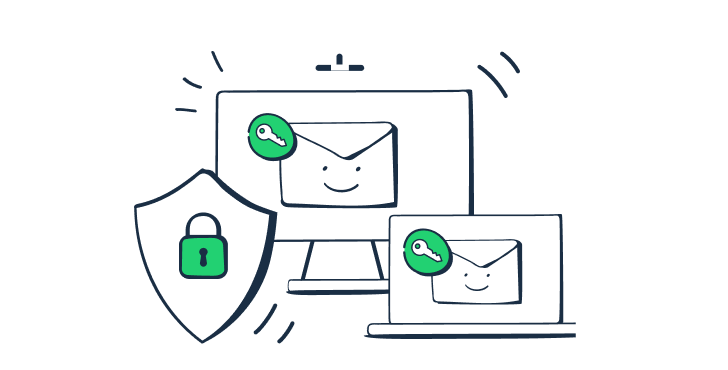
Securing enterprise electronic messaging isn’t a one-time fix; it’s an ongoing process requiring constant vigilance and adaptation. By implementing the recommended practices Artikeld here – from robust DLP strategies and secure gateways to comprehensive employee training and incident response planning – your organization can significantly strengthen its email security posture. Remember, a proactive approach, coupled with consistent monitoring and updates, is key to mitigating risks and safeguarding your valuable data.
Staying ahead of the curve in this ever-changing threat landscape is vital for maintaining business continuity and protecting your company’s reputation.
Query Resolution
What is the difference between email encryption and DLP?
Email encryption protects the email’s content during transit and at rest, preventing unauthorized access. DLP goes further, identifying and preventing the transmission of sensitive data, regardless of encryption.
How often should email security awareness training be conducted?
Ideally, email security awareness training should be conducted at least annually, with supplemental refresher training and simulated phishing campaigns throughout the year.
What should be included in an email retention policy?
An email retention policy should define which types of emails are archived, for how long, and the procedures for managing and accessing archived emails. It should also address legal and regulatory requirements.
What are the potential consequences of non-compliance with email security regulations?
Consequences can range from hefty fines and legal repercussions to reputational damage and loss of customer trust.
